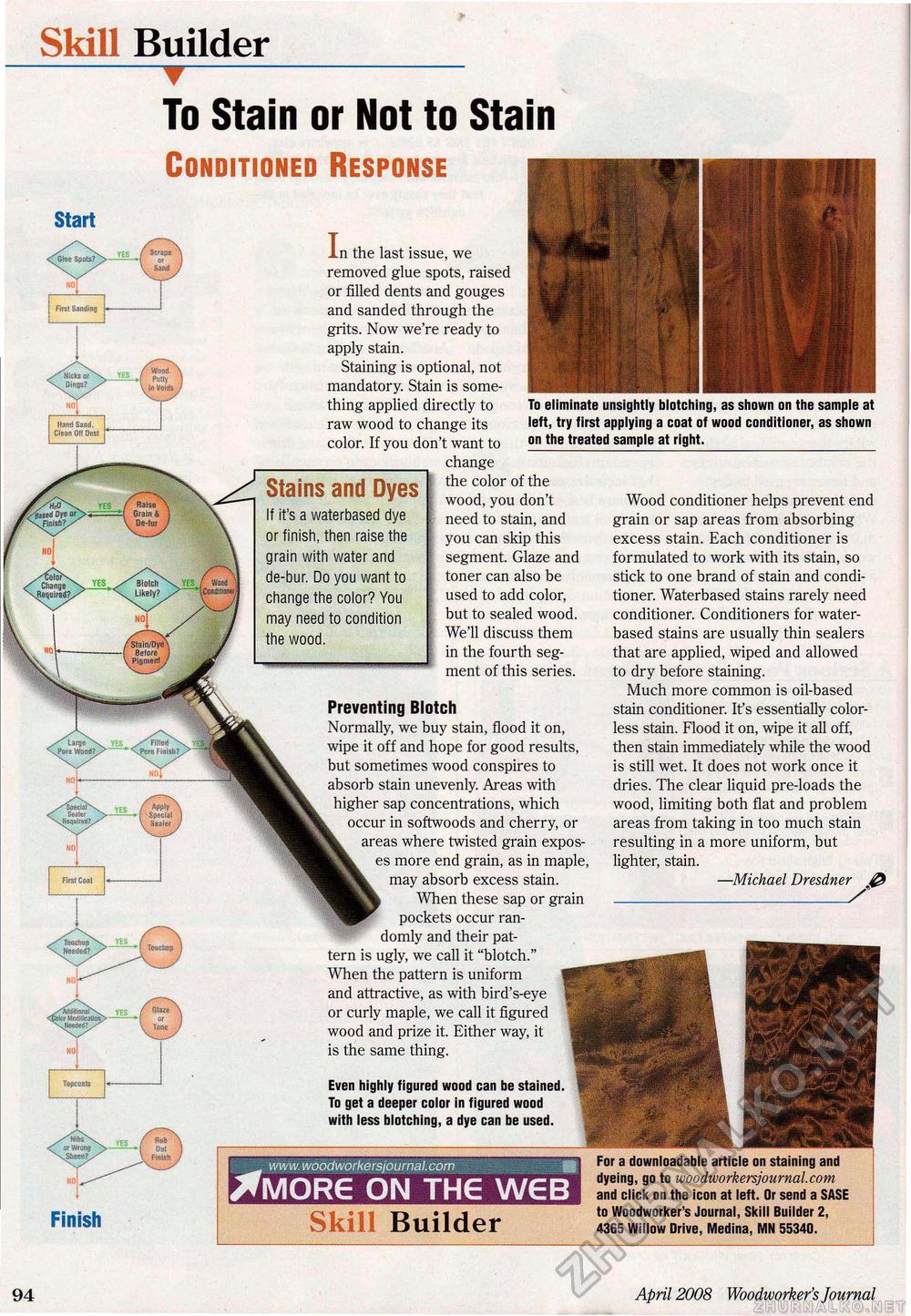Woodworker's Journal 2008-32-2, страница 92
Skill Builder XMORG ON THG WGB Ski Builder For a downloadable article on staining and dyeing, go to woodworkersjournal.com and click on the icon at left. Or send a SASE to Woodworker's Journal, Skill Builder 2, 4365 Willow Drive, Medina, MN 55340. Finish To Stain or Not to Stain Conditioned Response In the last issue, we removed glue spots, raised or filled dents and gouges and sanded through the grits. Now we're ready to apply stain. Staining is optional, not mandatory. Stain is something applied directly to raw wood to change its color. If you don't want to _ change To eliminate unsightly blotching, as shown on the sample at left, try first applying a coat of wood conditioner, as shown on the treated sample at right. Stains and Dyes If it's a waterbased dye or finish, then raise the grain with water and de-bur. Do you want to change the color? You may need to condition the wood. the color of the wood, you don't need to stain, and you can skip this segment. Glaze and toner can also be used to add color, but to sealed wood. We'll discuss them in the fourth segment of this series. Preventing Blotch Normally, we buy stain, flood it on, wipe it off and hope for good results, but sometimes wood conspires to absorb stain unevenly. Areas with higher sap concentrations, which occur in softwoods and cherry, or areas where twisted grain exposes more end grain, as in maple, may absorb excess stain. When these sap or grain pockets occur randomly and their pattern is ugly, we call it "blotch." When the pattern is uniform and attractive, as with bird's-eye or curly maple, we call it figured wood and prize it. Either way, it is the same thing. Wood conditioner helps prevent end grain or sap areas from absorbing excess stain. Each conditioner is formulated to work with its stain, so stick to one brand of stain and conditioner. Waterbased stains rarely need conditioner. Conditioners for water-based stains are usually thin sealers that are applied, wiped and allowed to dry before staining. Much more common is oil-based stain conditioner. It's essentially colorless stain. Flood it on, wipe it all off, then stain immediately while the wood is still wet. It does not work once it dries. The clear liquid pre-loads the wood, limiting both flat and problem areas from taking in too much stain resulting in a more uniform, but lighter, stain. —Michael Dresdner £ Even highly figured wood can be stained To get a deeper color in figured wood with less blotching, a dye can be used. 94 April 2008 Woodworker's Journal |







